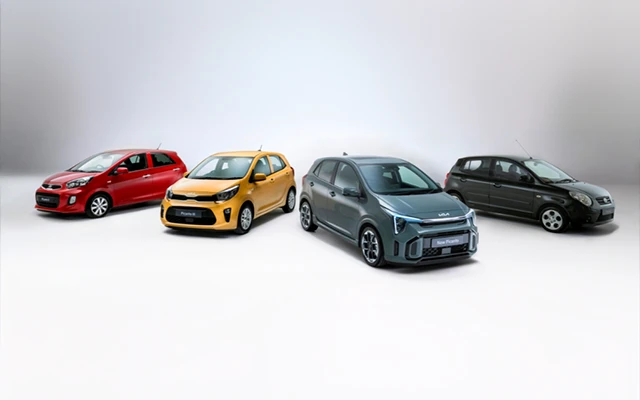
Kia’s beginnings were modest. Most early cars were rebadged versions of small Mazdas, built under licence in South Korea.
Nowadays, it is one of the world’s most successful car makers, and a global leader in electric cars. Models such as the EV6 are regularly included in lists of the world’s best electric vehicles. Like its sister brand Hyundai, Kia is an EV technology pioneer. This is perhaps not surprising. After all, it’s Korean – a country now renowned for its excellence in electronics, including software and battery technology.
Kia was founded in 1944 as a maker of steel tubes and bicycle parts. In 1952, it produced Korea’s first bicycle, the Samchuly. Its first vehicle – a Mazda truck built under licence – followed in 1962. In 1974, its first car, the Brisa, went on sale. Again, it was based on a Mazda. European, including UK, sales began in 1991, with the little Kia Pride. This was a rebadged late ’80s Mazda 121, sold on its low price.
South Korea’s technical and manufacturing capability was far behind the Japanese in those days. This changed as the 20th century drew to a close. Big corporations such as LG, Samsung and Hyundai were blossoming – a trend that would accelerate in the 21st century.
Kia was not so lucky. Hit hard by the Asian financial crisis, it went bankrupt in 1997. Erstwhile rival Hyundai took control: it remains Kia’s biggest shareholder, and the two brands share technology.
Under Hyundai stewardship, Kia blossomed. Sales of vehicles such as the Sportage SUV boomed. It wasn’t just the tech that improved. So did design. Particularly significant was the hiring of legendary ex-Audi designer Peter Schreyer, as Kia’s chief design officer. He revolutionised Kia’s style, boosting global appeal.
Kia has been transformed over its 80-year history. The Sportage is one of the world’s best family SUVs, the designed-for-Europe Ceed hatchback has a loyal following, and the big EV9 SUV and new small EV3 showcase the Korean maker’s electric car excellence.
Hendy currently represents Kia at 7 outlets.
.jpg.webp)
